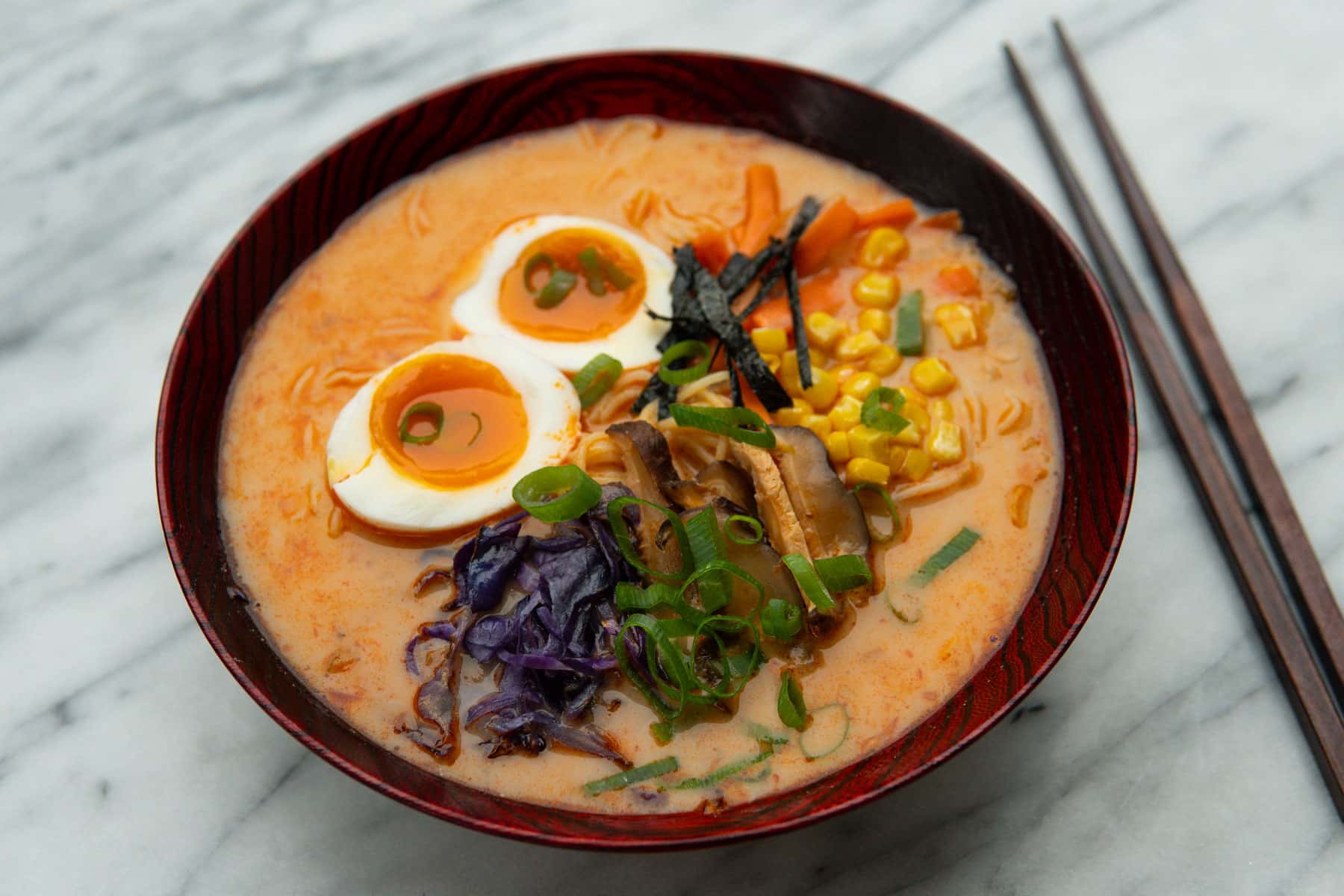
When we were in Kyoto for our honeymoon, we took a ramen and gyoza cooking class with instructor Yukari in her home kitchen. Her more authentic recipe used three types of miso paste and required a 24-hour soak to create a homemade dashi broth. So this recipe is my modified version and best effort to get a delicious vegetarian ramen with a few shortcuts. One hack we learned from Yukari is that if you boil regular pasta noodles in water with baking soda and salt, they turn much more ramen-like with a yellow color and springier texture.
P.S. It helps a lot to prep items ahead for this recipe since there are multiple components. So check the prep list (suggest prepping your toppings ahead)!
Ingredient highlight
Miso paste! Miso means “fermented beans” in Japanese and is typically made using fermented soy beans and/or grains. It packs in lots of umami-rich flavor, making it great for dressings, sauces, soups, and marinades. It’s also rich in probiotics, B vitamins, vitamin E, vitamin K, and folate.
You can find mellow white miso paste at most grocery stores in the refrigerated section near other fermented foods (kimchi, sauerkraut, etc…).
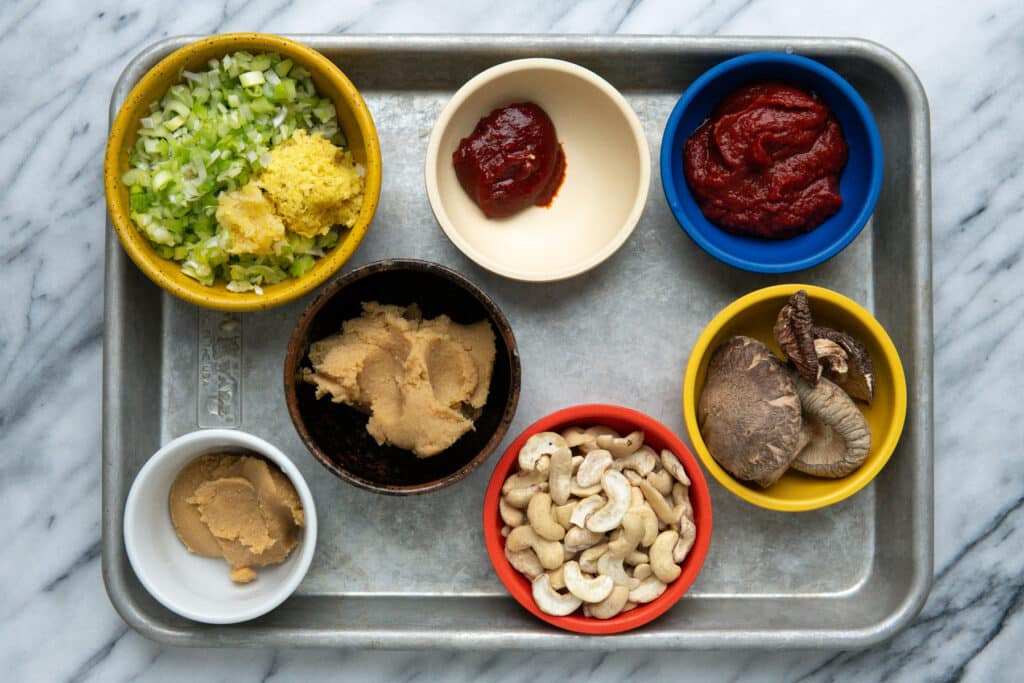
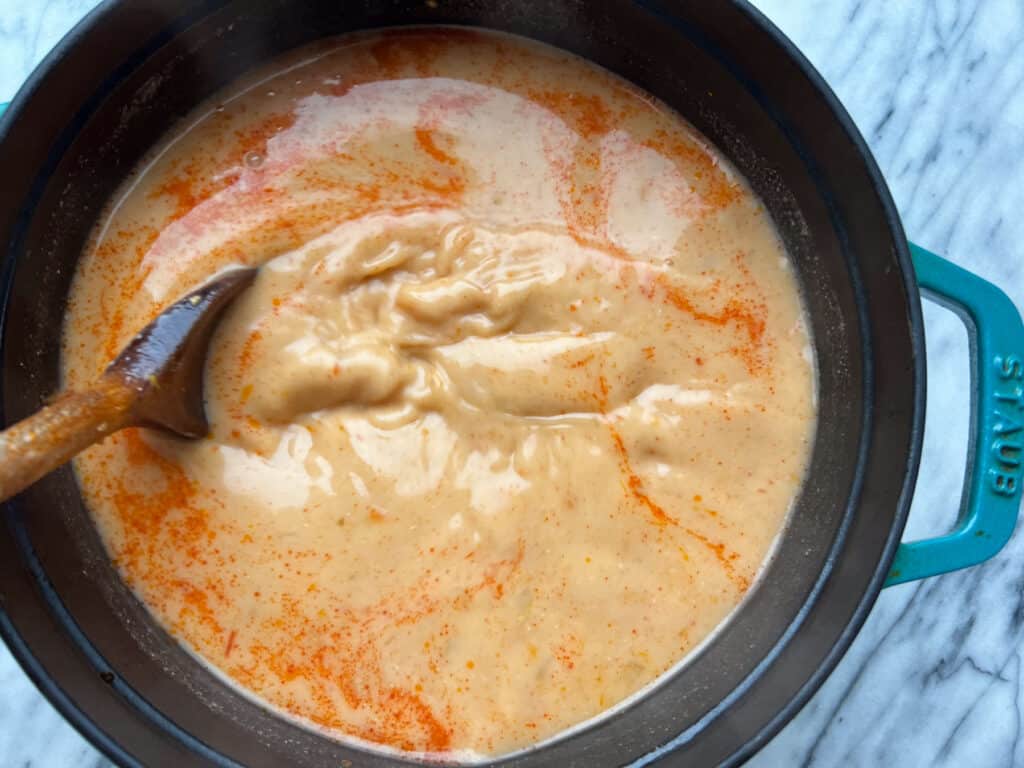
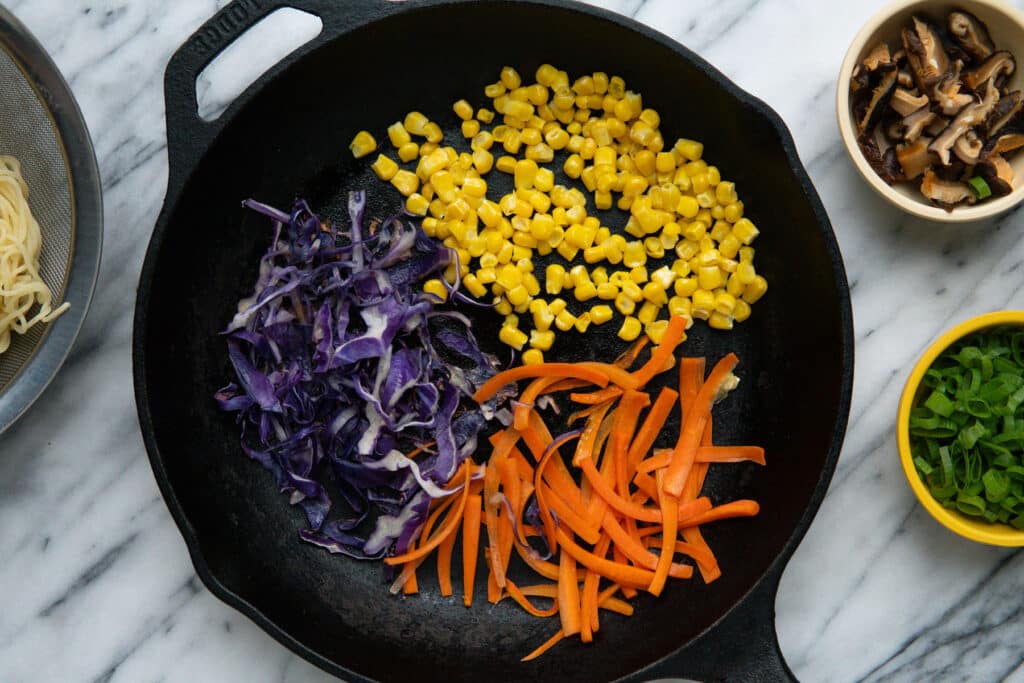
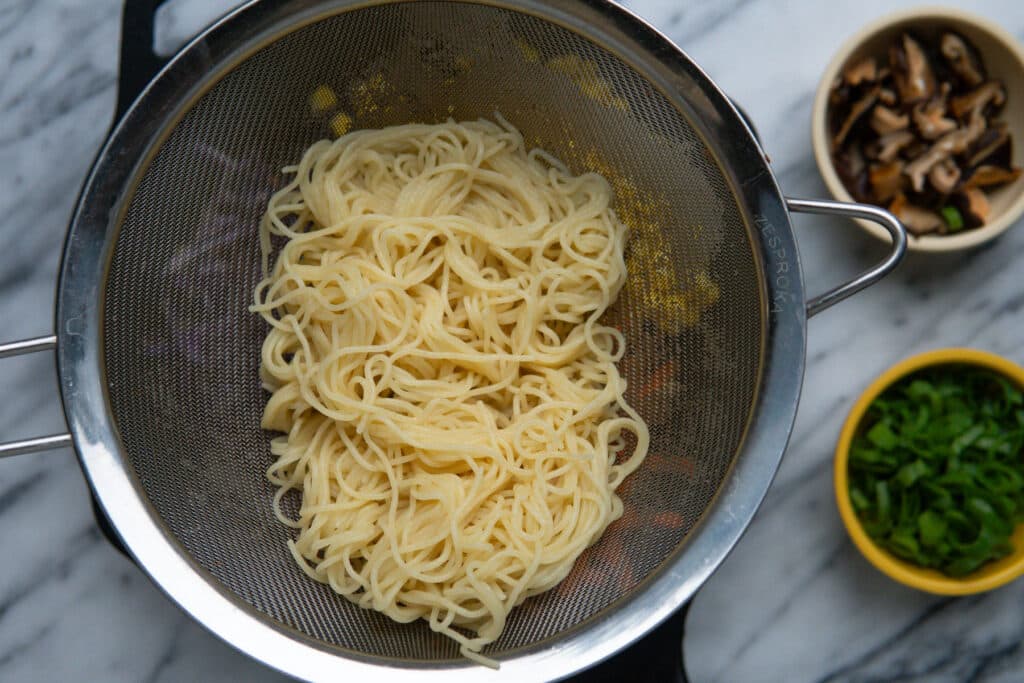
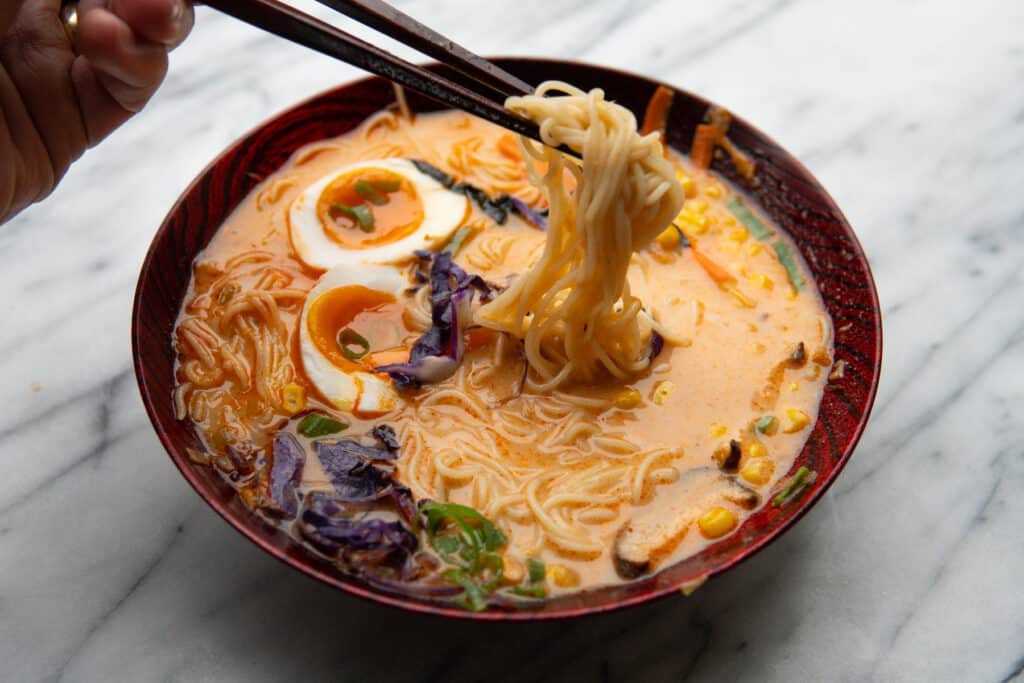
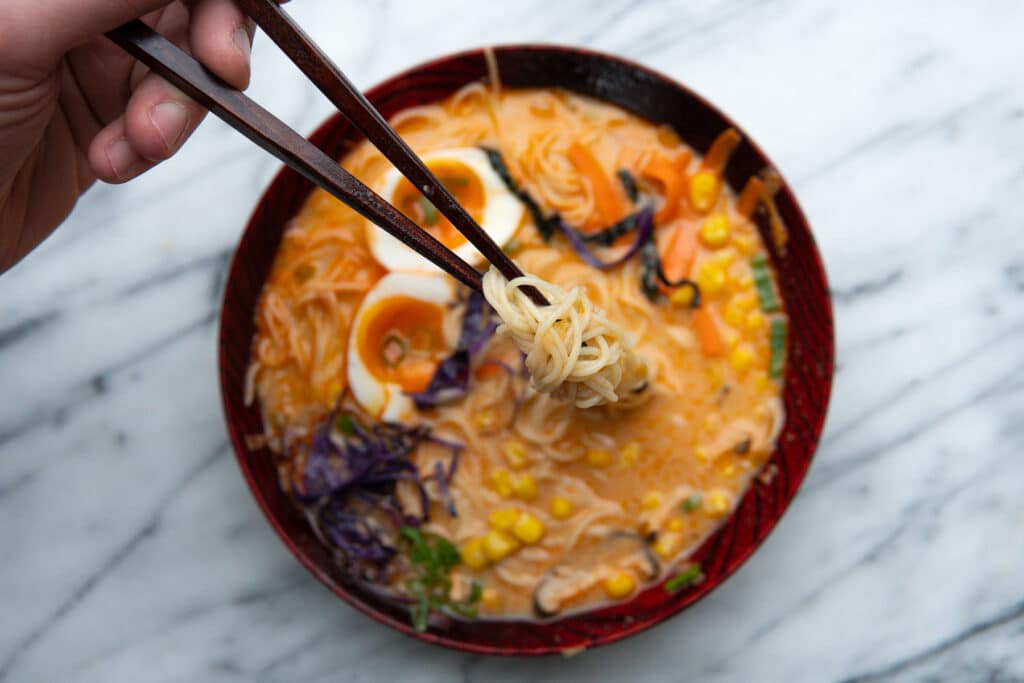
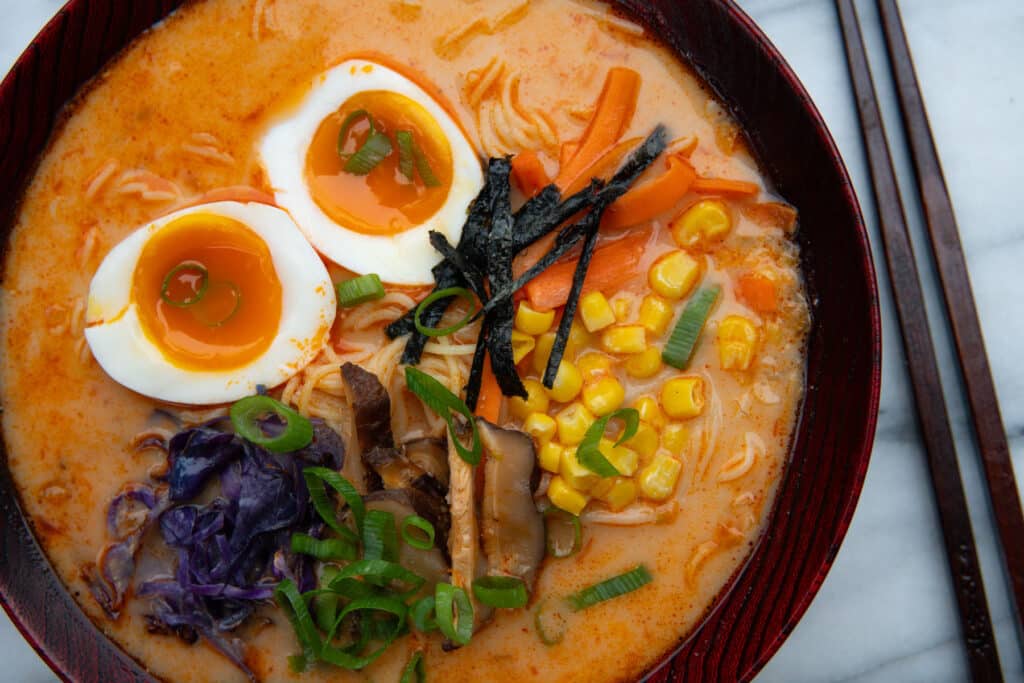
A peak into our ramen cooking class with Yukari
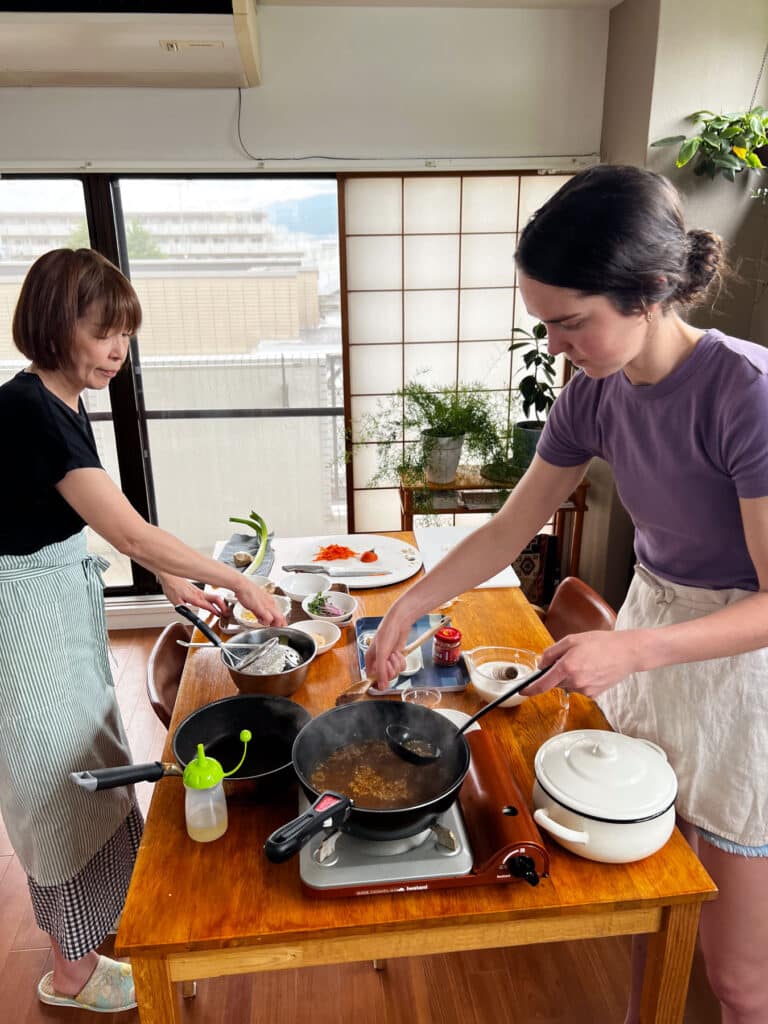
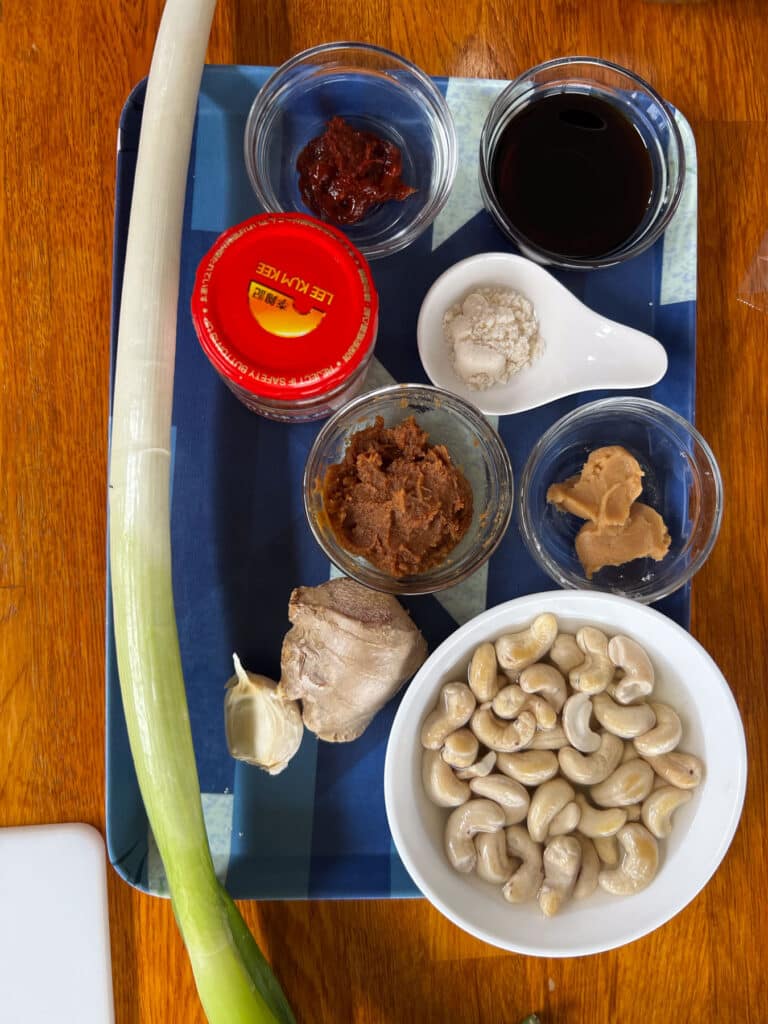
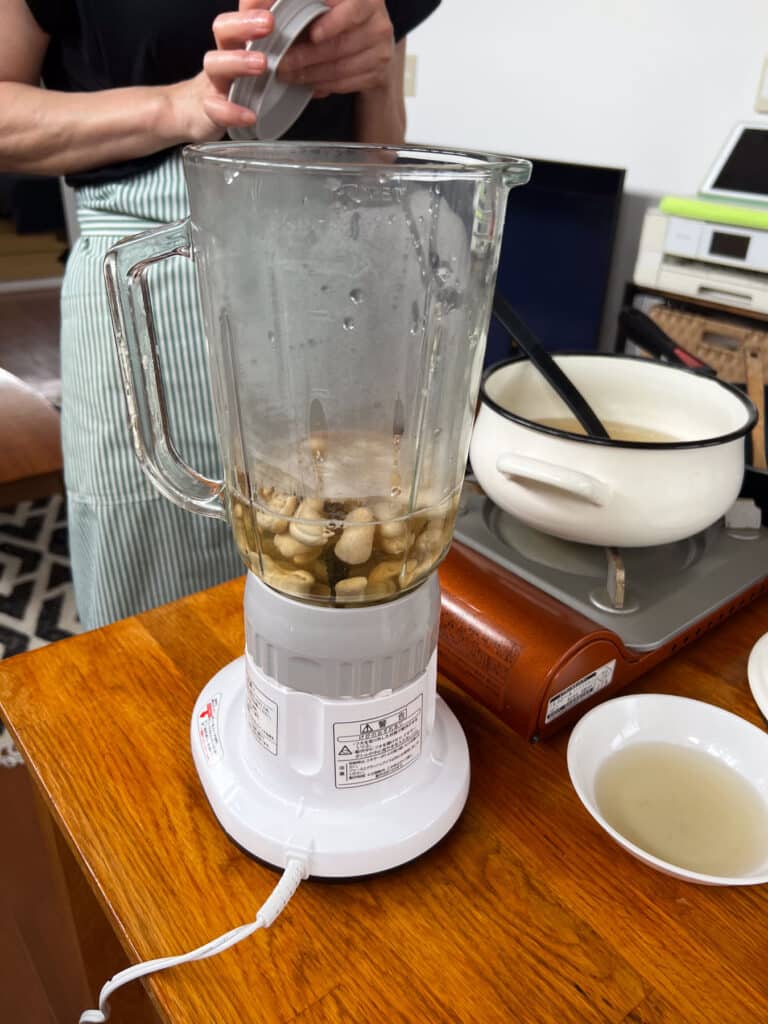
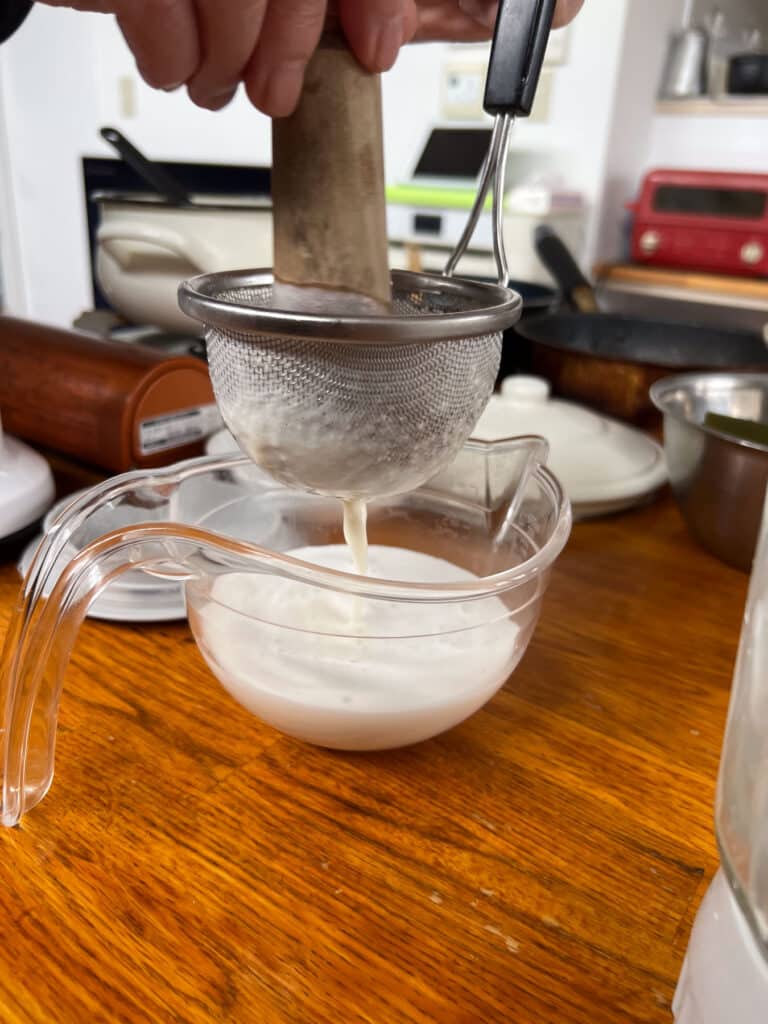
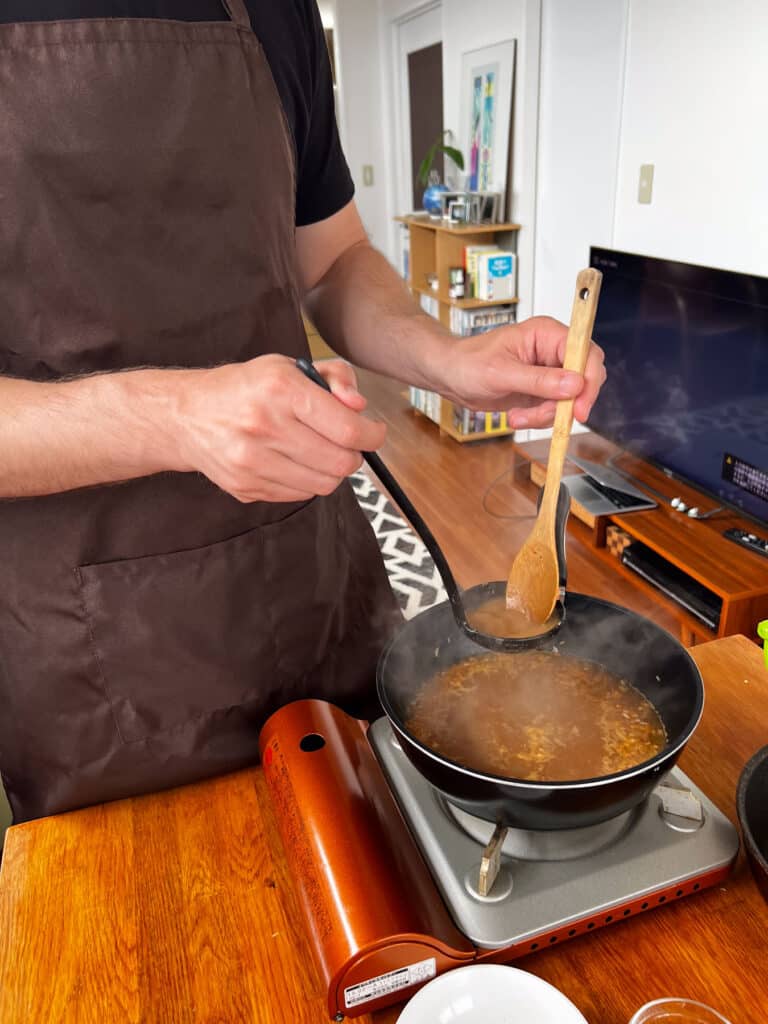
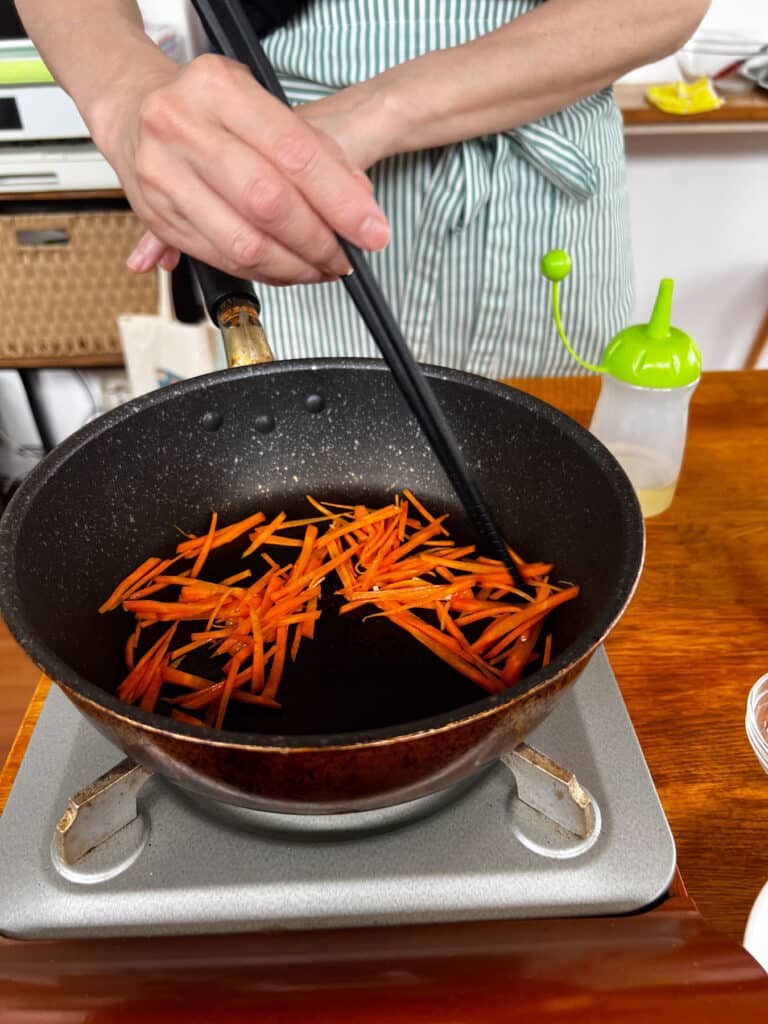
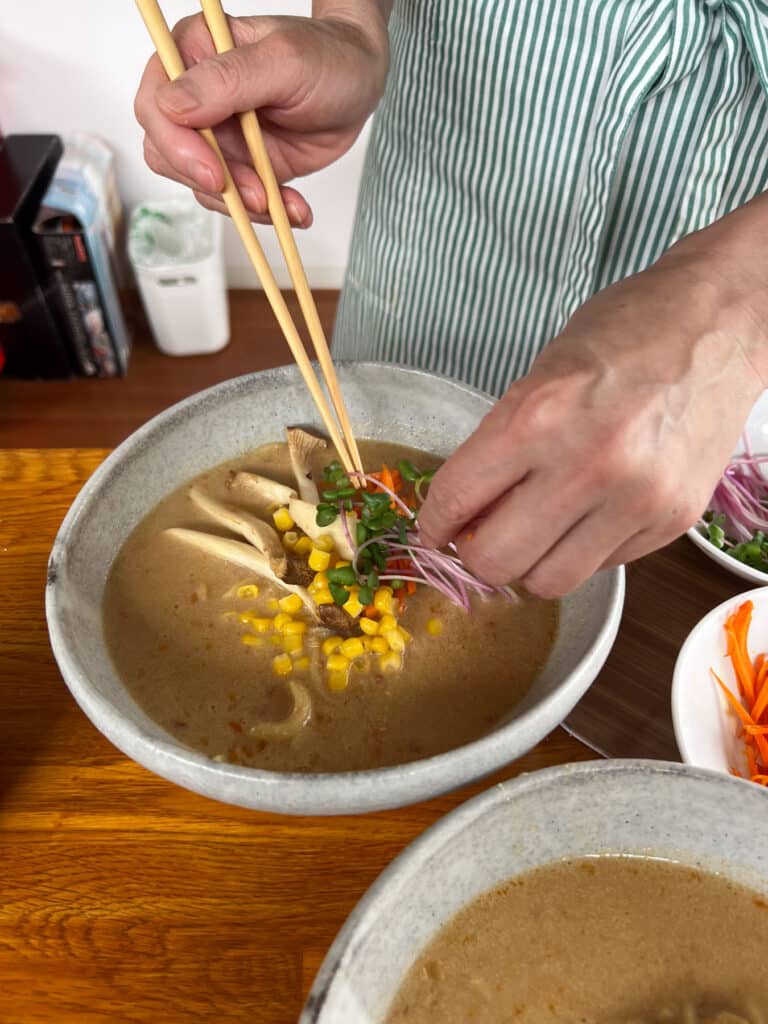
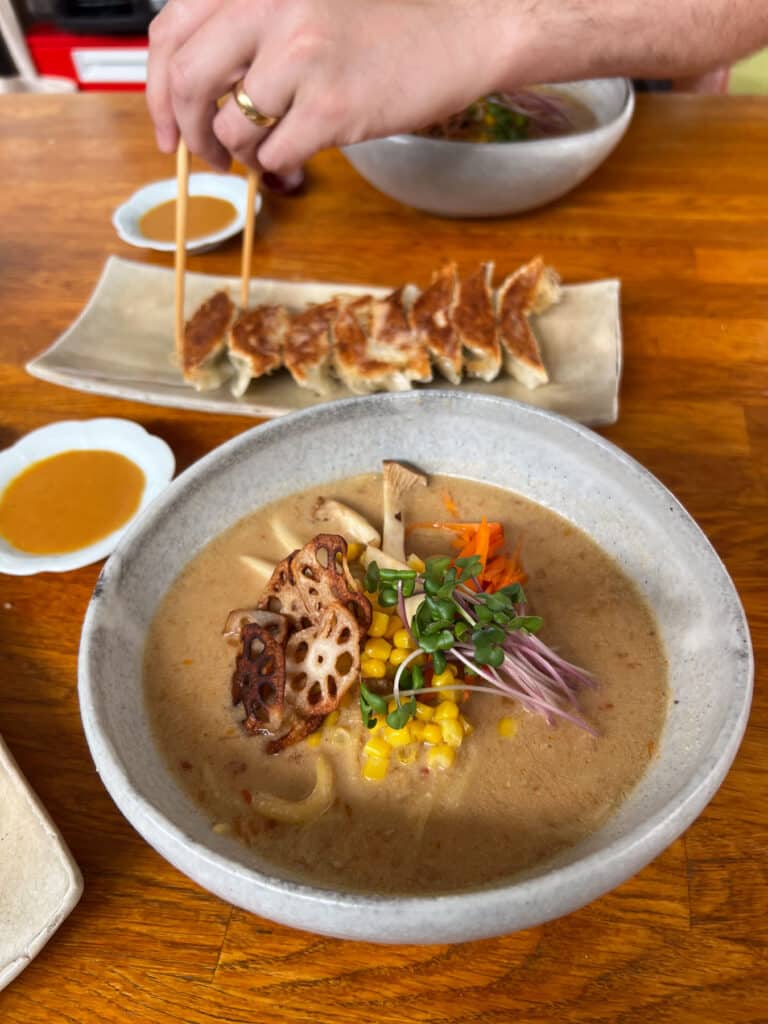
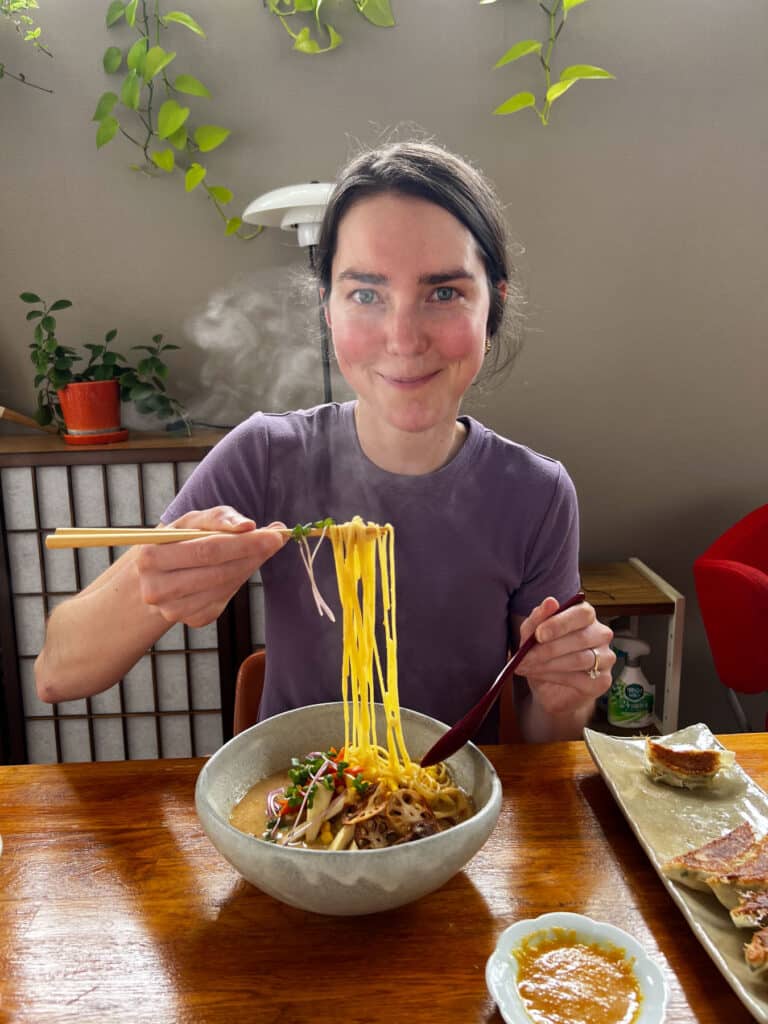
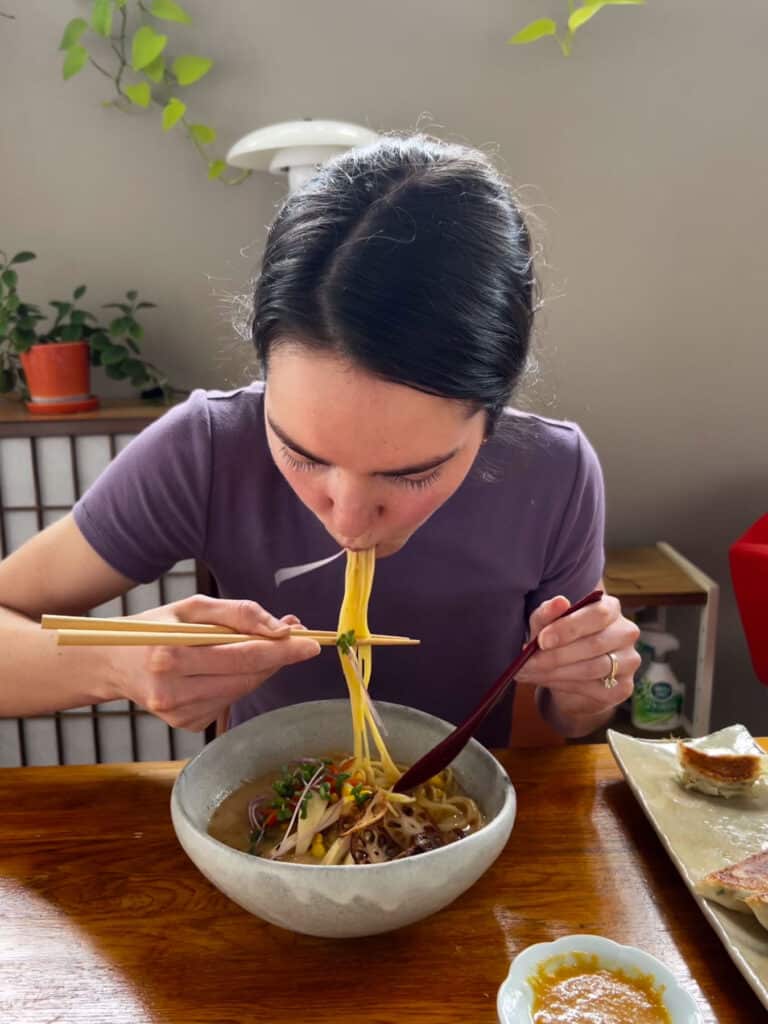
Ingredients
For the broth:
- 1 tbsp grated ginger
- 2 garlic cloves, finely chopped or grated
- 1 bunch scallions (white and light green parts finely chopped, dark green parts thinly sliced)
- ¼ cup + 2 tbsp mellow white miso paste, divided
- 3 tbsp tomato paste
- 1 tbsp gochujang or other chile paste*
- 8 cups water, divided
- 4 dried shiitake mushrooms (optional)**
- ½ cup raw cashews, soaked overnight or quick soaked
- 1 tbsp soy sauce or tamari
- 1 tsp sugar or honey
For the noodles:
- 8 oz thin spaghetti or angel hair
- 4 quarts water
- 2 tbsp baking soda
- 2 tsp kosher salt
Topping ideas:***
- Thinly sliced or grated carrot and/or cabbage
- Thinly sliced mushrooms (use the soaked mushrooms, thinly sliced, if using)
- Corn kernels
- Green sprouts or sliced scallions
- Boiled egg and/or baked tofu
- Thinly sliced cooked meat
- Nori strips
- Chili oil
- *Typically 3 different types of miso are used to make this broth and one of those is a spicy miso called doubanjiang. Instead, we’re just using one type of miso (the one I always have in the fridge) and adding in chili paste to create a similar flavor. Gochujang is a Korean chili paste that works really well here because it’s packed with umami flavor, but you could also use sriracha or any other chili paste you have on hand. You could also leave it out if you don’t want it spicy. Now that I have gochujang, I plan on experimenting with it more in recipes AND it keeps forever in the fridge.
- **Dried shiitake mushrooms (and kombu) are typically used to make Japanese vegetarian “dashi” because they add a lot of umami flavor without any animal products. Feel free to leave it out if you don’t want to buy them. If you do buy them, you can add them to any broths and soups for an extra boost of flavor.
- ***To save on time (and dishes) you could just add your toppings into the broth and simmer them for a minute rather than cooking them separately. If you want to be more authentic, follow the recipe as is!
- Tip! ~ From member Kelly: "I made the broth and simmered a single serving with a ramen noodle packet, it worked great and saved on dishes!".
Instructions
For the noodles:
- In a large pot, bring the water to a boil. Add baking soda (water will foam up!), salt, and pasta and cook for 2 minutes longer than the package instructions. Keep eye on it, stirring often to avoid bubbling/foaming over. Drain the noodles and give them a quick rinse. The noodles turn to yellow and become more springy in texture like ramen noodles. Transfer to your bowl.
For the soup:
- In a large pot, warm 2 tablespoons oil over medium heat. Add ginger, garlic, and white parts of scallions. Cook for a minute, stirring often, until fragrant but not browned. Stir in 2 tablespoons miso paste, tomato paste, and gochujang/chili paste and cook for 3-4 minutes, stirring often, or until tomato paste is caramelized and sticking to the bottom of the pot.
- Stir 4 cups of water into the pot, along with the dried mushrooms (if using). Scrape up anything stuck to the bottom of the pot. Bring to a boil over high heat, then reduce the heat to low and simmer for 10 minutes. Remove the mushrooms (if using, set aside to cool, then squeeze out any liquid back into the pot, then slice up to top the soup, leaving out the woody stems).
- Meanwhile, place soaked cashews and remaining 4 cups of water into a high-speed blender and blend on high until smooth, about 1 minute. Pour into the pot and bring back to a simmer.
- Add remaining ¼ cup miso into a ladle or large measuring up, add some of the hot soup broth, and mix/mash the miso to dissolve in the liquid. Pour back into the pot and turn off the heat. Stir in the soy sauce and sugar.
For the toppings:
- If you’re topping with carrot, cabbage, mushrooms, and/or corn, I’d recommend giving them a light sautee just to soften them before topping. This is what we did in class!
To serve:
- Add noodles to your bowl and ladle the broth over top. Add your toppings and enjoy!
Items you can prep ahead (optional)
- Prepare your toppings (slice and cook them, if applicable)
- Boil 4 eggs
- Prep 1 bunch scallions (white and light green parts finely chopped, dark green parts thinly sliced)
- Grate 1 tbsp ginger
- Grate 2 garlic cloves
- Soak (or quick soak) ½ cup raw cashews
- Make the ramen broth
Substitutions:
- To make gluten-free, use gluten-free spaghetti or rice noodles.
Storage:
- Store leftovers in an airtight container in the fridge or freezer
- Ramen broth will last up to 7 days in the fridge or freeze for up to 2 months
Leftovers + Repurposing:
- Warm up leftover broth on the stovetop or microwave. Serve with noodles and toppings.
- When heating up the broth, you could add some extra veggies or greens if you’d like.
Ingredients
For the broth:
- 1 tbsp grated ginger
- 2 garlic cloves, finely chopped or grated
- 1 bunch scallions (white and light green parts finely chopped, dark green parts thinly sliced)
- ¼ cup + 2 tbsp mellow white miso paste, divided
- 3 tbsp tomato paste
- 1 tbsp gochujang or other chile paste*
- 8 cups water, divided
- 4 dried shiitake mushrooms (optional)**
- ½ cup raw cashews, soaked overnight or quick soaked
- 1 tbsp soy sauce or tamari
- 1 tsp sugar or honey
For the noodles:
- 8 oz thin spaghetti or angel hair
- 4 quarts water
- 2 tbsp baking soda
- 2 tsp kosher salt
Topping ideas:***
- Thinly sliced or grated carrot and/or cabbage
- Thinly sliced mushrooms (use the soaked mushrooms, thinly sliced, if using)
- Corn kernels
- Green sprouts or sliced scallions
- Boiled egg and/or baked tofu
- Thinly sliced cooked meat
- Nori strips
- Chili oil
- *Typically 3 different types of miso are used to make this broth and one of those is a spicy miso called doubanjiang. Instead, we’re just using one type of miso (the one I always have in the fridge) and adding in chili paste to create a similar flavor. Gochujang is a Korean chili paste that works really well here because it’s packed with umami flavor, but you could also use sriracha or any other chili paste you have on hand. You could also leave it out if you don’t want it spicy. Now that I have gochujang, I plan on experimenting with it more in recipes AND it keeps forever in the fridge.
- **Dried shiitake mushrooms (and kombu) are typically used to make Japanese vegetarian “dashi” because they add a lot of umami flavor without any animal products. Feel free to leave it out if you don’t want to buy them. If you do buy them, you can add them to any broths and soups for an extra boost of flavor.
- ***To save on time (and dishes) you could just add your toppings into the broth and simmer them for a minute rather than cooking them separately. If you want to be more authentic, follow the recipe as is!
- Tip! ~ From member Kelly: "I made the broth and simmered a single serving with a ramen noodle packet, it worked great and saved on dishes!".
Instructions
For the noodles:
- In a large pot, bring the water to a boil. Add baking soda (water will foam up!), salt, and pasta and cook for 2 minutes longer than the package instructions. Keep eye on it, stirring often to avoid bubbling/foaming over. Drain the noodles and give them a quick rinse. The noodles turn to yellow and become more springy in texture like ramen noodles. Transfer to your bowl.
For the soup:
- In a large pot, warm 2 tablespoons oil over medium heat. Add ginger, garlic, and white parts of scallions. Cook for a minute, stirring often, until fragrant but not browned. Stir in 2 tablespoons miso paste, tomato paste, and gochujang/chili paste and cook for 3-4 minutes, stirring often, or until tomato paste is caramelized and sticking to the bottom of the pot.
- Stir 4 cups of water into the pot, along with the dried mushrooms (if using). Scrape up anything stuck to the bottom of the pot. Bring to a boil over high heat, then reduce the heat to low and simmer for 10 minutes. Remove the mushrooms (if using, set aside to cool, then squeeze out any liquid back into the pot, then slice up to top the soup, leaving out the woody stems).
- Meanwhile, place soaked cashews and remaining 4 cups of water into a high-speed blender and blend on high until smooth, about 1 minute. Pour into the pot and bring back to a simmer.
- Add remaining ¼ cup miso into a ladle or large measuring up, add some of the hot soup broth, and mix/mash the miso to dissolve in the liquid. Pour back into the pot and turn off the heat. Stir in the soy sauce and sugar.
For the toppings:
- If you’re topping with carrot, cabbage, mushrooms, and/or corn, I’d recommend giving them a light sautee just to soften them before topping. This is what we did in class!
To serve:
- Add noodles to your bowl and ladle the broth over top. Add your toppings and enjoy!
Items you can prep ahead (optional)
- Prepare your toppings (slice and cook them, if applicable)
- Boil 4 eggs
- Prep 1 bunch scallions (white and light green parts finely chopped, dark green parts thinly sliced)
- Grate 1 tbsp ginger
- Grate 2 garlic cloves
- Soak (or quick soak) ½ cup raw cashews
- Make the ramen broth
Substitutions:
- To make gluten-free, use gluten-free spaghetti or rice noodles.
Storage:
- Store leftovers in an airtight container in the fridge or freezer
- Ramen broth will last up to 7 days in the fridge or freeze for up to 2 months
Leftovers + Repurposing:
- Warm up leftover broth on the stovetop or microwave. Serve with noodles and toppings.
- When heating up the broth, you could add some extra veggies or greens if you’d like.
watch & learn
Useful Videos
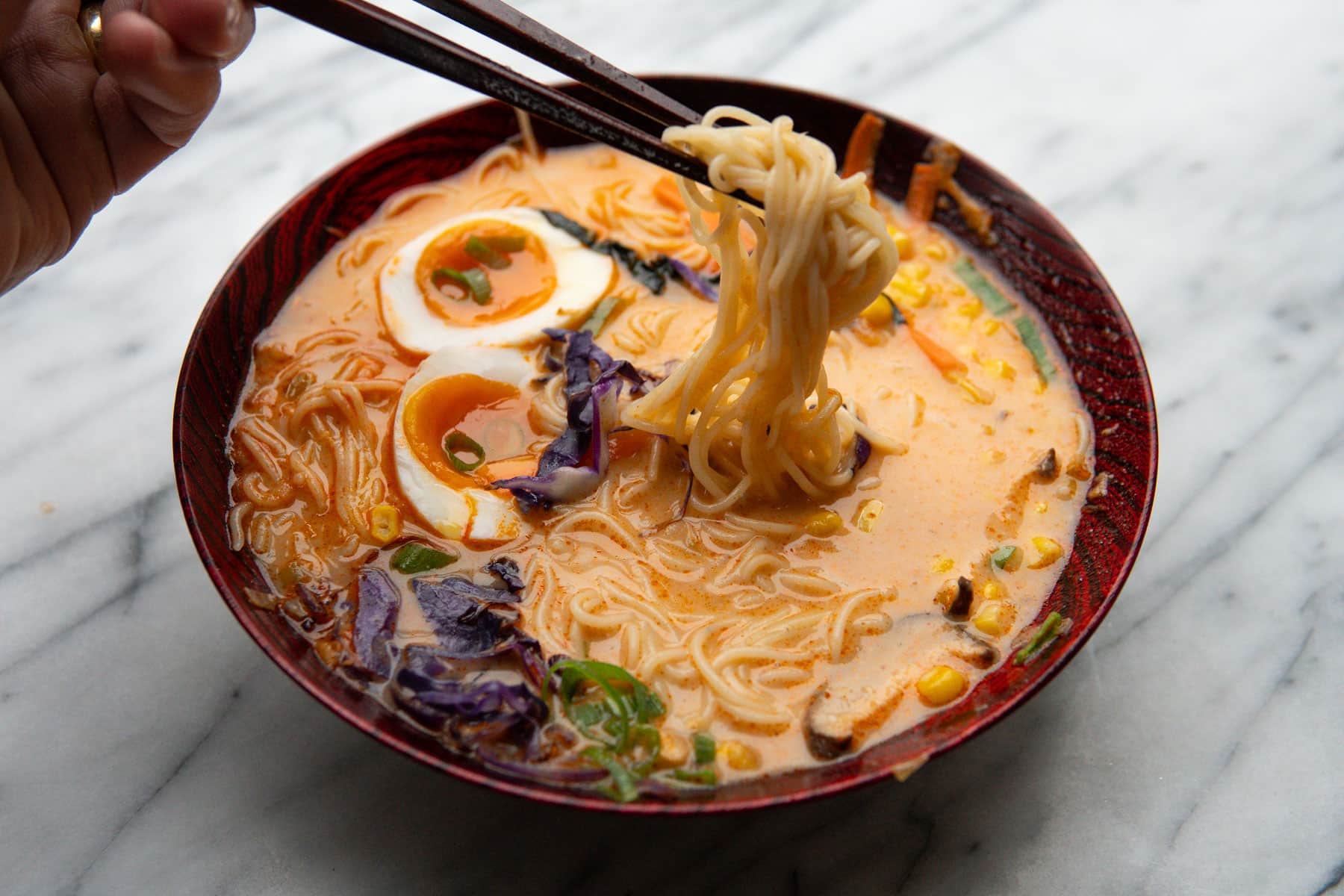



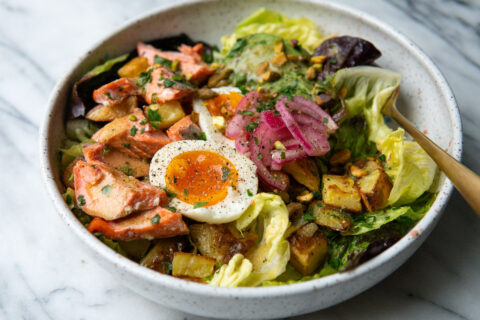

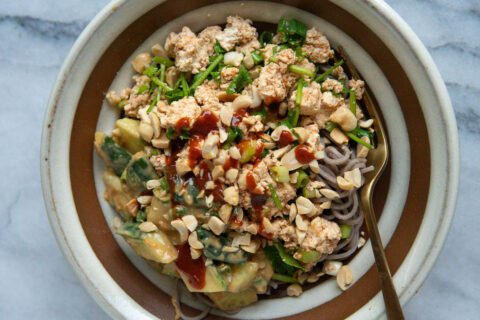


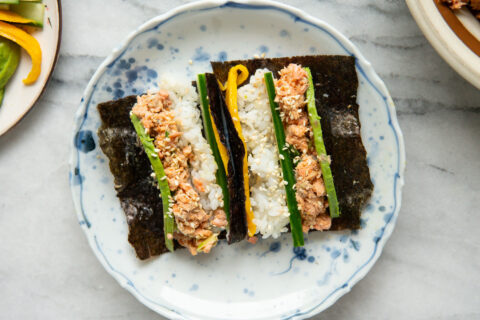
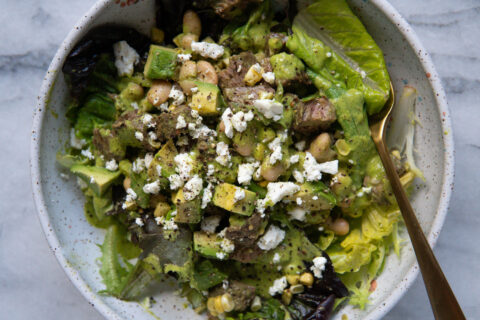
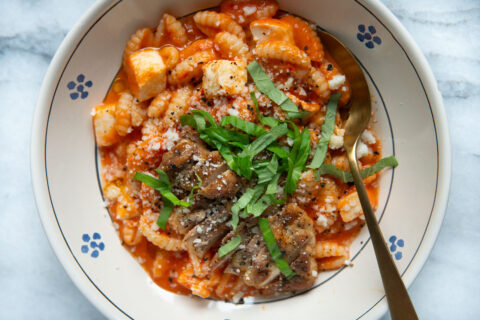


Hi Natali, this recipe was so so good! I went to the print recipe option but it looks like the incorrect recipe is attached to that feature (it shows the salmon sheet pan dinner).
Thanks for catching that! Just fixed. So happy to hear you loved it!!
Is there any substitute for the cashews? My son is allergic. This looks so good. Thanks!
Yes! You could use any other soaked nut or seed. I would try it with sunflower seeds – make sure to soak or quick soak them like the recipe says and blend them for a long time so it gets super creamy. If it’s gritty, you could pour it through a fine mesh strainer or cheese cloth but I think it would work fine without that step. Let me know how that turns out!